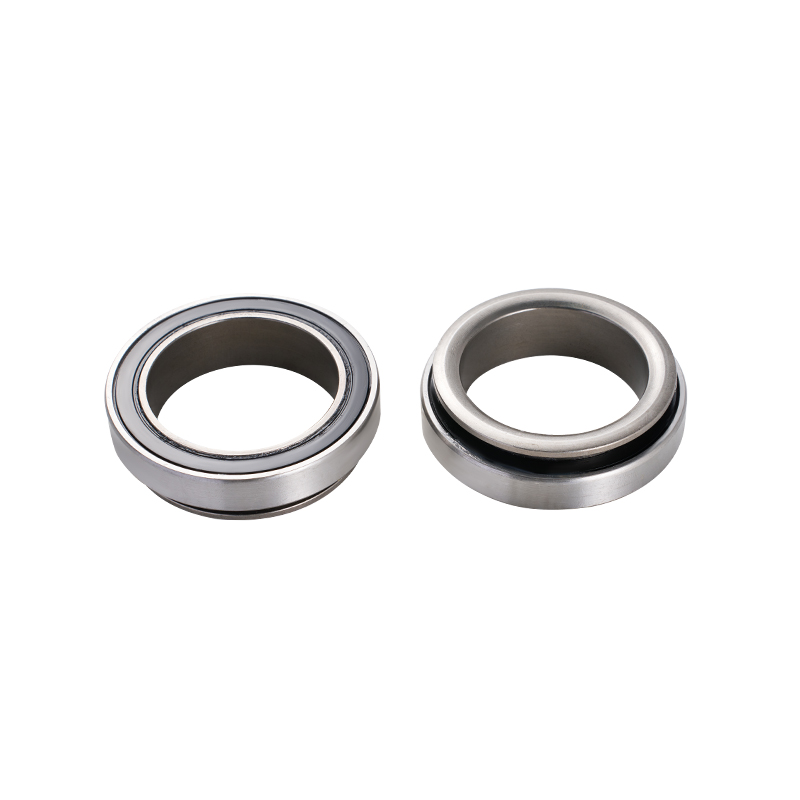At our clutch component manufacturing facility, we often get asked about the mysterious noises that develop in clutch pressure plate release bearings. These sounds – whether squeaks, rattles, or grinding – typically indicate wear patterns that we as manufacturers work tirelessly to prevent through precision engineering. Understanding these noise sources helps both mechanics and drivers address issues before they cause complete failure.
common culprit behind a noisy clutch plate bearing is lubrication breakdown. During production, we carefully apply high-temperature grease to all bearing contact surfaces. However, over time, heat from constant clutch engagement can degrade this lubricant. When the grease dries out or becomes contaminated, metal-to-metal contact occurs between the bearing races and rollers in your clutch plate pressure plate release bearing, creating that characteristic high-pitched squeal many drivers notice when depressing the pedal.

Another frequent noise source stems from misalignment during installation. Even our precisely machined clutch pressure plate release bearings can develop problems if improperly seated against the pressure plate fingers. We design these components with tight tolerances – sometimes as little as 0.01mm clearance – so any installation angle deviation causes uneven pressure distribution. This guides to a rhythmic clicking or knocking sound as the slightly tilted bearing rotates against the pressure plate.
Material fatigue also plays a significant role in bearing noise generation. Through extensive testing in our factory, we've observed how the constant compression cycles weaken the spring mechanisms within the clutch plate bearing assembly. As these springs lose tension, they allow microscopic play in the system, resulting in a telltale rattling noise when the clutch is in the out position. This is particularly common in high-mileage vehicles or performance applications with aggressive clutch engagement.
Contamination represents another major concern for clutch plate pressure plate release bearing longevity. Despite our sealed bearing designs, fine particles from clutch disc wear or environmental debris sometimes infiltrate the bearing housing. When these abrasive materials mix with remaining lubricant, they create a grinding paste that accelerates wear. The resulting gritty, growling noise often indicates the bearing races have developed microscopic scoring that worsens with each rotation.
We've also identified thermal warping as a noise contributor in clutch pressure plate release bearings. Repeated heat cycles from stop-and-go traffic or heavy towing can actually distort the bearing's outer race. This deformation creates inconsistent contact points that produce a wobbling or vibration noise synchronized with engine RPM. Our current R&D focuses on advanced alloy compositions to better resist this thermal distortion in operating conditions.
From the manufacturing perspective, preventing these noise issues begins with material selection. We use case-hardened steel for all critical clutch plate bearing components, ensuring good hardness-to-toughness ratios. The bearing races undergo superfinishing processes that create mirror-like surfaces, reducing friction points where noise could originate. Each clutch plate pressure plate release bearing undergoes individual rotation testing before leaving our facility to catch any potential noise issues at the source.
Proper break-in procedures also significantly impact noise development. We recommend gentle clutch engagement for 500 miles after installing a new clutch pressure plate release bearing. This allows the components to gradually wear into great alignment rather than forcing immediate high-load contact that could create permanent noise-inducing imgreations in the bearing surfaces.
These innovations aim to extend the silent operation period while maintaining the durability expected from professional-grade clutch components. After all, in our factory's philosophy, a quiet clutch pressure plate release bearing isn't just a luxury – it's the audible proof of precision manufacturing.



 English
English русский
русский
